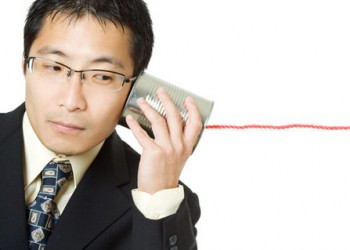Even your best salesmanship, customer service, friendly attitude and attention to detail will not have every customer coming back to you. There will be incidents where a customer is dissatisfied and no longer makes purchases.
However, they may not be gone forever. In fact, sometimes a customer who goes away because something bad happened may return if the incident is rectified, and the party in question is reengaged in the right manner. Whether the loss occurred due to poor customer service or clients disappeared for no apparent reason, as business speakers and industry experts often note, don’t write prospects off just yet – in many cases, you can get these old customers back.
A study done by Marketing Metrics says you have a 20-40% chance of winning back an ex-customer and a 5-20% chance of turning a prospect into a customer. Therefore, lost customers have more value than stone cold prospects. What follows are seven different methods of getting old customers back. While they may not always work, bringing a loyal customer back into the fold means you have more products that can be purchased, as well as someone telling their friends to try your business.
Call them and Ask “What Happened?”
Quite often, the direct approach is best if that customer was lost because of poor customer service. Remember to be polite, up-front and start off by asking them what turned them off of your business. Although this method may seem rather blunt, one of the biggest issues that turn customers off is the lack of direct communication with the owner or someone who can fix the situation. For example, American Express marketing employee, Lois Geller created a new customer acquisition campaign for a client who had lost 3,700 customer companies. She had their staff get on the phone, and within a few weeks, gained back half of these lost customers. Geller said it would have taken that client a few years, and a lot more money, to gain that many new customers had it not been proactive.
Offer a Special Discount
It may not be practical to offer deals to all of your lost customers, but send the most important ones a discount certificate or a special gift along with your personal letter. In an age of impersonal mass marketing, it’s impossible to overestimate the positive impact that your individual attention and appreciation of their business can make. Through your regular social media channels or email postings, send your most important customers a direct offer that is exclusive to them. For an email, they should see that you sent it to no one else. Such an offer just might be the trick to get them to come back.
Remind Them of the Benefits Your Business Offers
You can also send lost customers a message reminding them of the benefits your company offers today and – most importantly – how you can help them going forward. A gentle reminder of how your company provides much-needed products or services, and is actively working every day to create more value for customers, could be just the thing to jolt them back into making more purchases.
Write a Letter
If a customer has disappeared for no apparent reason, write them a personal letter and send it via snail mail. Be sure that the envelope has a handwritten address so that it doesn’t appear like a typical sales letter. In your letter, offer them a reason why they should try your business again and be sure to follow it up with an email or two – in many cases, a personal touch is all it takes to bridge a seemingly insurmountable communications gap. Geller recommends using snail mail comminuqes because they look and feel more important. You can also back them up with e-mail efforts and perhaps a special Web landing page – but the email, subject line and supporting promotions need to appear highly individualized and personalized, so as not to give the impression of a form letter.
Refer Business to Them
If the customer you lose is in business themselves, consider referring new contacts and or business to them as if they were still your loyal customer. Such an offer will remind them of the appreciation and respect you have for their business and their worth as a customer. Ultimately, this helps trigger their memory about why your company was a valuable partner and asset to their own business, and keeps your brand top of mind. No matter your line of work, whether you’re an accountant, attorney, mechanic, marketing guru or business speaker, cultivating a strong network of referrals creates a virtuous cycle that can benefit all involved.
Provide Access to Special Programs
What win-back offers tend to best entice which audiences? Is a lapsed customer that received special favors and gifts in the past best motivated by a price advantage coupled with special treatment? Testing various offers is key to finding out, as it enables you to understand which factors influence customers to return. If you have a new product or service, consider incorporating them into tests as well. Market your new product with exclusive advance access, special discount promotions and other offers around it and see if customers react. Give customers the chance to provide feedback and respond, refining campaigns as you go – you may be surprised who reengages along the way.
Reinforce Positive Decisions
Research shows that a lost customer’s decision to reinitiate a relationship after a long lapse can result in more discord than it does for those who reinitiate after a shorter lapse. The way a lost customer who comes back handles this dissonance is to engage in post-decision processing that reinforces the new decision that has been made. Knowing this, for customers who do return, it’s important to provide ample messaging and insight that communicates why the decision to return was a sound one. After all, reinstating interaction isn’t just about reengaging customers or reigniting interest in your business – it’s also about building trust, creating positive relationships, and reminding others why it’s a great idea to keep coming back.














